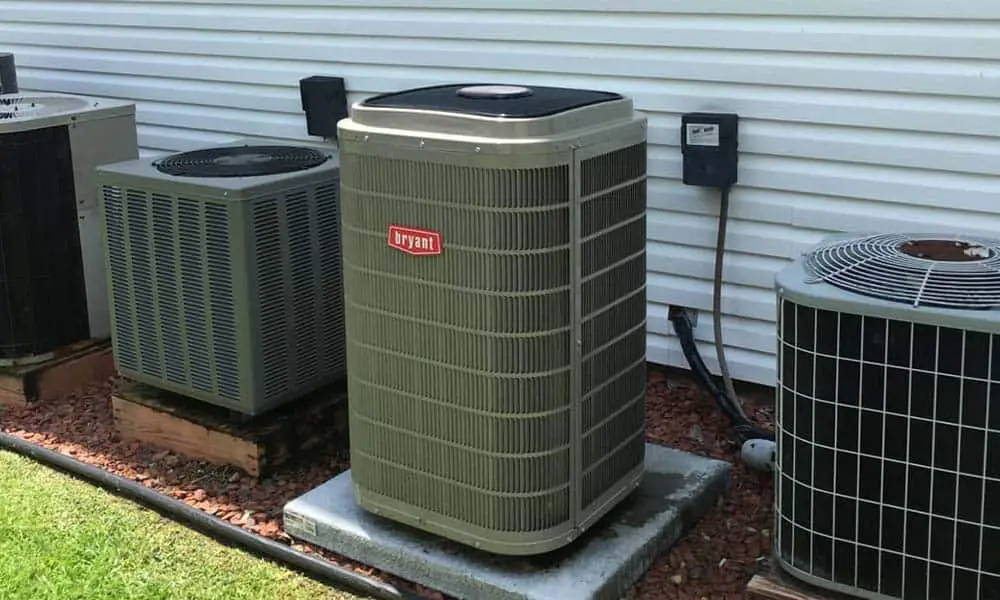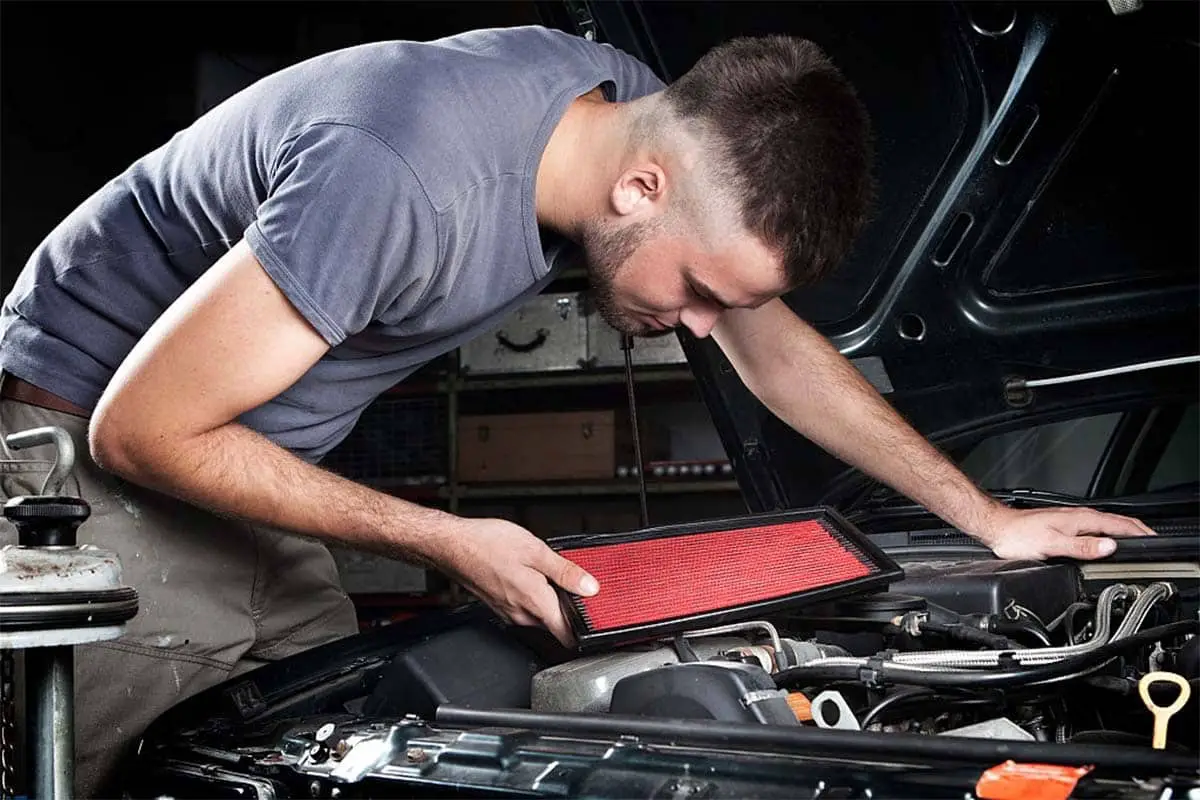Whether you are in the process of building a new home or thinking about replacing your existing heating system, there are many options from which to choose.
Forced air, boilers, solar, wood heating, and heat pumps. If you decide to purchase a heat pump, there are a couple of options for choosing one; air-to-air, or air to water. Here in this article is a review of five air to water heat pumps.
Types of Air Heat Pumps
There are two types of heat pumps; air-to-air, which absorbs the outside air and transfers it back into the home as heat, and air to water heating, which is the type we are going to review.
The air-water heat pump also takes heat from the outside air but then transfers it to a system of water which pumps distribute through radiators, radiant floor heating, and central vac systems.
Logically thinking, when in heating mode, these pumps extract the heat from the outside air, distributing it inside. In cooling mode, it takes the heat within the home and distributes it to the outside.
Air to water heat pumps is proving to be more efficient than other sources of heat, as the energy they produce is greater than the electricity needed to function, without compromising on the quality of heat. However, with anything, there are advantages and disadvantages.
Disadvantages
- The function depends on the insulation of your home
- The initial startup can be costly
- May not perform as well in colder temperatures
Advantages
- Use less space as they are smaller than other home heating devices
- Less impact on the environment
Reviews Of The 5 Best Air Water Heat Pumps
Arctic Air to Water Heat Pump
The Arctic air to water, easy to install a heat pump is a 48000 BTU unit weighing 300 pounds, with a flow rate of eleven gallons per minute.
This heat pump comes equipped with EVI DC technology (enhanced vapor injection), creating the ability to work in temperatures as low as minus 25.
It heats and cools, consuming up to only one-quarter of the electricity that it produces, and requires a 220 voltage power connection.
Advantages
- Functions in colder temperatures
- Energy savings of 75 percent compared to electric or gas heating
- Defrosts
- Heats and cools
- Easy to install
Disadvantages
- High start-up cost
- One-year warranty on all parts
- Unsightly fans
Daikin Altherma 3 M
The Daikin Altherma (3 M R32) is a 136 x 160 x 37 mm unit, and can basically fit under a windowsill.
The one fan circulates the air and is covered with a grill, reducing noise and improving air circulation.
This machine’s heating capabilities are guaranteed to perform in temperatures of minus 20 and come with easy-to-use controls, allowing the user to control functions such as heating and monitoring energy consumption from anywhere.
Equipped with R32, preferable among other gases, as it is known to lower greenhouse gases.
The heat pump works in perfect sync, delivering current to fan coils, in-floor heating, and heating convectors.
All hydraulic parts fit compactly into one area of the unit, with minimal wiring making it easy to install.
Advantages
- Ideal for small spaces
- Minimal wiring
- Smartphone compatible
- Easy installation
Disadvantages
- The initial cost is expensive
Aermec Air to Water Heat Pump
The Aermec (ANK 030) air to a water heat pump is a 37670 BTU, approximately 340-pound reversible heat pump that can produce cold water for cooling and hot water for heating.
It requires a 220 voltage power connection and is optimized for delivering heat needed for in-floor radiant heating and conventional radiators.
This pump is capable of operating in winter temperatures of minus 4 degrees Fahrenheit, and up to 114 degrees Fahrenheit in the summer, and has a built-in heat exchanger to ensure the productivity of hot water on demand.
(It’s a good idea to purchase a storage tank, depending on hot water usage).
This unit comes with a hydronic kit, including components making it easy to install, and a multi-touch control panel with easy access and visuals.
Advantages
- Produces hot water up to 140 degrees Fahrenheit
- Reduces energy costs by up to 30 percent
- Produces less noise due to the quality and acoustics of components
Disadvantages
- High start-up cost
- Unsightly fans
Nordic Air To Water Heat Pump
The Nordic air-to-water heat pump (ATW series) is a 22700 BTU air-to-water heat pump.
It not only heats water, but it also cools for air conditioning with the use of a hydronic fan.
There are coils inside these fans which absorb the heat from the hot water and distribute it where needed.
The ATW models vary in size from 2 to 6 tons and will operate in cold temperatures of minus 21.7 degrees celsius.
The compressor section of this unit (model 25) weighs approximately two hundred and seventy pounds, with the installation inside and measures 28×28.
With the compressor’s installation on the inside, it ensures easier maintenance. The fan and air coil weigh approximately two hundred and thirty pounds with the installation outside.
The control panel is located on the indoor unit and protected by outside elements This unit comes with different leg lengths, depending on installation location and weather.
Advantages
- Easy maintenance
- The control panel is on the inside unit and is protected from the weather.
- Lightweight fan
- Air coils are slightly slanted for water runoff
Disadvantages
- The outside unit is large and unsightly
- The compressor is inside
- The compressor may be noisy and does not come standard with a noise buffering insulator
- Anti-vibration pad for under inside unit does not come standard
LG Air to Water Heat Pump
The LG (Therma V 32) air to water heat pump operates in cold temperatures up to minus twenty-five.
The low noise emissions allow the installation of this unit to be as close to four meters from other structures. This heat pump uses R32, which lowers greenhouse gases.
The compressor has a scroll-shaped design enabling greater performance and saving energy, thus allowing the unit to perform in colder temperatures and increasing water temperatures by 65 percent.
Another feature of this machine is its ability to prevent corrosion using a process known as Black Fin. (Blackfin is a hydrophilic coating protecting the condenser fins).
The coating aids in the prevention of contaminants such as salt and sand damaging the condenser.
The LG V 32 comes equipped with a smart technology panel enabling users to access the unit from anywhere.
Advantages
- Low Noise emissions
- Uses a corrosive preventative
- Low maintenance
- No refrigerant piping needed
Disadvantages
- Unsightly fan
- Expensive start-up costs
Conclusions
We just had a look at five distinct air to water heat pumps. Depending on what your needs are, will determine which will be the best for you.
There are a few things to take into consideration before making your selection. The cost of these units can be quite expensive if comparing them to other sources of heat, but some advantages outweigh the initial cost such as lower greenhouse gases, less maintenance, and providing cool air during the summer for less compared to electric air conditioning.
Depending on your location and winter temperatures, air-to-water heat pumps may not work as efficiently in extreme climates and would need a backup source of heat to compensate.
Also, depending on how many users would use the hot water at once with these types of heat pumps, an option for a larger holding tank may be necessary for storing hot water.
With that being said, if I had to pick a winner from the five sources listed, I would choose the LG (V 32). It operates in cold temperatures of up to minus 25, only needs to be installed a minimum of four feet away from neighbors and/or structures, and has very low noise emissions.
One of the best features not mentioned has to be the warranty. It starts standard at one year and increases to seven upon the completion of the heat pump installation and paperwork. This warranty is also transferrable in the event of new homeowners.



